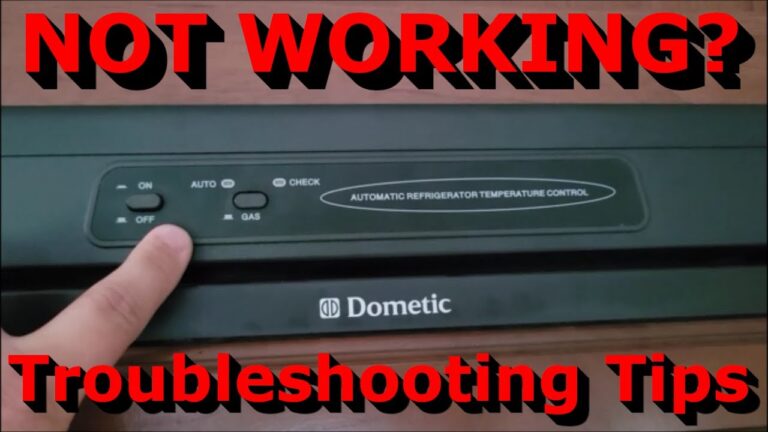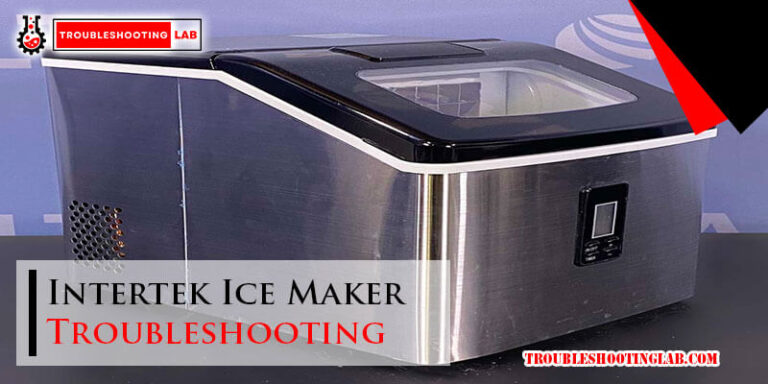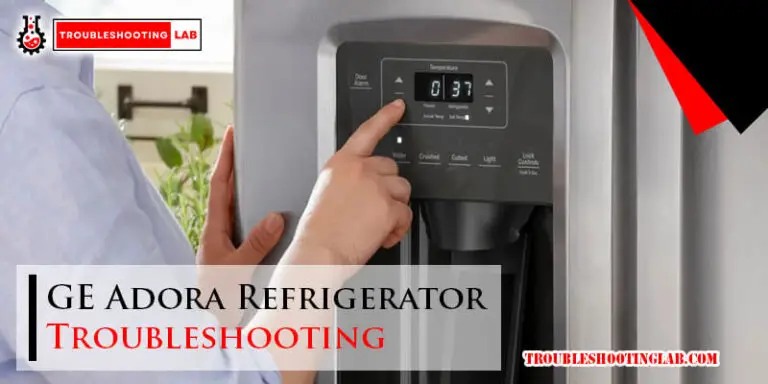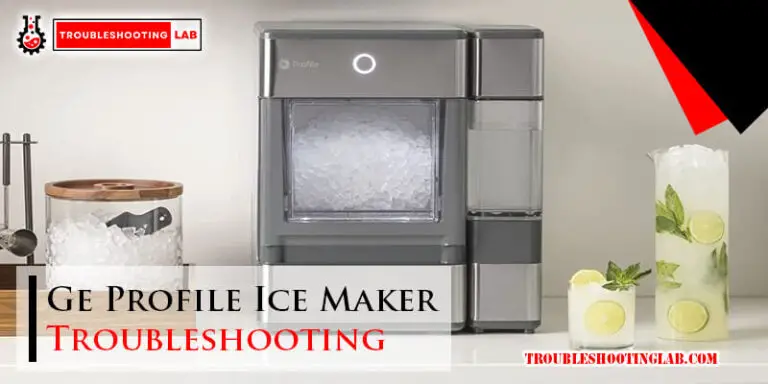Antarctic Star Ice Maker Troubleshooting: Expert Tips & Solutions
To troubleshoot an Antarctic Star Ice Maker, check the water supply and ensure the machine is properly plugged in. Resetting the machine can resolve minor issues.Antarctic Star Ice Makers are popular for their efficiency and reliability. Users might encounter occasional issues that can be easily addressed with some basic troubleshooting. Common problems include the machine not producing ice, making strange noises, or leaking water. These issues often stem from simple causes like blocked water lines, incorrect settings, or power interruptions.
Knowing how to troubleshoot these problems can save time and money, ensuring your ice maker operates smoothly. This guide will help you identify and fix common issues with your Antarctic Star Ice Maker, keeping it running efficiently.
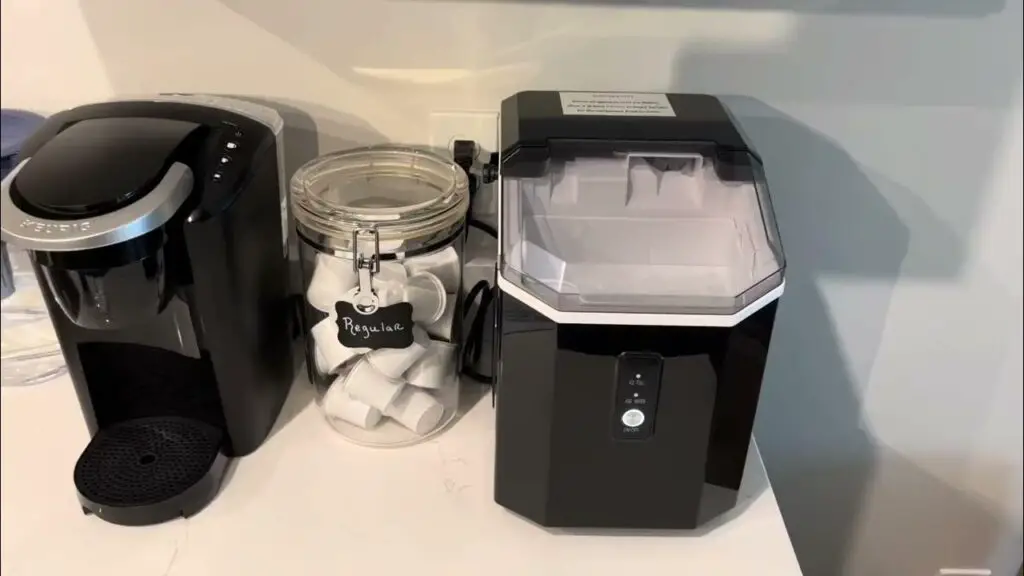
Common Issues
Antarctic Star Ice Maker is a reliable appliance. But sometimes, it faces common issues. Understanding these problems can help you fix them quickly.
Ice Maker Not Turning On
One common issue is the ice maker not turning on. This can be due to several reasons:
- Power Supply: Ensure the ice maker is plugged in. Check if the outlet is working.
- Control Panel: Inspect the control panel for any error messages.
- Fuse: A blown fuse might be the cause. Check and replace if necessary.
Always check the basics first. This includes the power supply and control panel.
Ice Production Slowing Down
Another common issue is ice production slowing down. This can happen due to:
- Water Supply: Ensure there is enough water in the reservoir.
- Filter: A clogged filter can slow down production. Clean or replace the filter regularly.
- Temperature: The room temperature affects ice production. Keep the ice maker in a cool place.
Here is a quick table to summarize the solutions:
| Issue | Possible Cause | Solution |
|---|---|---|
| Ice Maker Not Turning On | Power Supply | Check the outlet and plug |
| Ice Production Slowing Down | Water Supply | Refill the reservoir |
| Ice Production Slowing Down | Clogged Filter | Clean or replace the filter |
| Ice Production Slowing Down | High Room Temperature | Move to a cooler location |
By addressing these common issues, you can ensure your Antarctic Star Ice Maker works efficiently.
Basic Checks
Having trouble with your Antarctic Star Ice Maker? Start with the basic checks. These simple steps can resolve many common issues. Follow this guide to perform basic checks.
Power Supply
Ensure the ice maker is plugged in. Check if the outlet works. Use another appliance to test the outlet. If the outlet works, inspect the ice maker’s power cord. Look for any damage or frayed wires. Replace the power cord if necessary. Confirm the power switch is turned on. If the ice maker has a reset button, press it.
Water Connection
Verify the ice maker is connected to a water source. Check the water supply valve. Ensure it is fully open. Inspect the water line for any kinks or blockages. Straighten any kinks in the water line. Clean the water filter if your model has one. Replace the filter if it is clogged or dirty. Confirm the water pressure is adequate. Low water pressure can affect ice production.
Here’s a quick checklist:
- Plug the ice maker into a working outlet.
- Inspect the power cord for damage.
- Turn on the power switch.
- Press the reset button if available.
- Check the water supply valve.
- Ensure the water line is not kinked.
- Clean or replace the water filter.
- Verify adequate water pressure.
By performing these basic checks, you can resolve many common issues. Always refer to your user manual for specific instructions. Troubleshooting can save you time and help your ice maker run smoothly.
Ice Quality Problems
Ice quality problems can arise with any ice maker. Antarctic Star Ice Maker is no exception. Common issues include cloudy ice and bad tasting ice. Understanding these problems helps in maintaining your ice maker.
Cloudy Ice
Cloudy ice is often due to air bubbles or impurities. To resolve this, follow these steps:
- Check the water quality. Use filtered water to reduce impurities.
- Ensure the ice maker is level. An uneven surface can cause air bubbles.
- Clean the ice maker regularly. Build-up can affect ice clarity.
Using clean, filtered water is crucial for clear ice. Leveling the ice maker also helps.
Bad Tasting Ice
Bad tasting ice can ruin your drinks. This issue usually stems from dirty water or ice maker components. Follow these tips to improve ice taste:
- Replace the water filter regularly. Filters can become clogged.
- Clean the ice maker thoroughly. Use a mixture of vinegar and water.
- Store ice properly. Use airtight containers to prevent odors.
Cleaning the ice maker is essential for fresh-tasting ice. Proper storage also prevents contamination.
| Problem | Solution |
|---|---|
| Cloudy Ice | Use filtered water, level the ice maker, clean regularly |
| Bad Tasting Ice | Replace water filter, clean with vinegar, store ice properly |
Cleaning Procedures
Proper cleaning of your Antarctic Star Ice Maker ensures it works efficiently. Regular cleaning prevents buildup and ensures fresh ice every time. Follow these steps to keep your ice maker in top shape.
Descaling
Descaling removes mineral deposits that can affect your ice maker’s performance. Follow these steps to descale:
- Unplug the ice maker.
- Remove any remaining ice and water.
- Mix a descaling solution according to the manufacturer’s instructions.
- Pour the solution into the water reservoir.
- Run a cleaning cycle.
- Drain the solution and rinse the reservoir with fresh water.
- Run a few cycles with clean water to remove any residue.
Sanitizing
Sanitizing your ice maker kills bacteria and keeps your ice safe. Here are the steps:
- Unplug the ice maker.
- Remove any ice and water.
- Mix a sanitizing solution using one tablespoon of bleach per gallon of water.
- Wipe down the interior with the solution using a clean cloth.
- Fill the water reservoir with the solution.
- Run a cleaning cycle.
- Drain the solution and rinse thoroughly with clean water.
- Run a few cycles with fresh water to ensure all bleach is removed.
Regular descaling and sanitizing are essential for your Antarctic Star Ice Maker. These steps ensure your machine runs smoothly and produces clean, fresh ice.
Component Inspections
Regular component inspections can help ensure your Antarctic Star Ice Maker runs smoothly. By checking key parts, you can identify issues early. This section will guide you through inspecting critical components.
Water Filter
The water filter is crucial for clean ice production. A dirty filter can block water flow and reduce ice quality. Follow these steps to inspect your water filter:
- Turn off the ice maker and unplug it.
- Locate the water filter, usually found at the back.
- Remove the filter by turning it counterclockwise.
- Check for dirt or discoloration.
- Replace the filter if it appears dirty or damaged.
Using a clean water filter ensures your ice is clear and safe. Replace the filter every six months for optimal performance.
Ice Tray
The ice tray is where ice cubes form. A damaged tray can affect ice quality and shape. Inspecting the tray is simple:
- Open the ice maker door and locate the ice tray.
- Remove the tray carefully to avoid spills.
- Check the tray for cracks or residue buildup.
- Clean the tray with warm, soapy water.
- Dry the tray completely before reinserting it.
A clean, intact ice tray ensures your ice cubes are uniform. Regular cleaning prevents mold and bacteria buildup.
Temperature Issues
Temperature issues are common in ice makers, and the Antarctic Star Ice Maker is no exception. Understanding and troubleshooting these issues can help ensure your ice maker runs efficiently. Below, we will explore common temperature-related problems and provide solutions.
Room Temperature
The room temperature where your ice maker is located plays a crucial role. If the room is too warm, the ice maker may struggle to maintain the proper internal temperature.
- Ensure the room temperature is between 50°F and 90°F.
- Avoid placing the ice maker near heat sources.
- Ensure adequate ventilation around the unit.
High room temperatures can cause the ice maker to overwork, leading to inefficiency and potential breakdowns.
Internal Temperature
The internal temperature of the ice maker is vital for proper ice production. If the internal temperature is too high or too low, the ice maker will not function correctly.
- Check the thermostat settings and adjust if needed.
- Clean the condenser coils to improve efficiency.
- Ensure the door seals are tight and free of damage.
Regularly monitoring the internal temperature can help prevent ice production issues and extend the life of your ice maker.
| Problem | Possible Cause | Solution |
|---|---|---|
| Ice is too soft | Internal temperature too high | Adjust thermostat, clean coils |
| Ice maker not producing ice | Room temperature too high | Move unit, ensure ventilation |
| Ice is melting quickly | Door seals not tight | Inspect and replace seals |
Understanding these temperature issues can help keep your Antarctic Star Ice Maker running smoothly. Regular maintenance and proper placement are key.
Advanced Troubleshooting
Experiencing issues with your Antarctic Star Ice Maker? This advanced troubleshooting guide helps you resolve common problems. Understand error codes and perform software resets easily.
Error Codes
Error codes provide insights into your ice maker’s problems. Here’s a list of common error codes and their meanings:
| Error Code | Description | Solution |
|---|---|---|
| E1 | Water Supply Issue | Check water line connection. |
| E2 | Ice Full Sensor Malfunction | Clean or replace the sensor. |
| E3 | Low Refrigerant Level | Contact a technician. |
Understanding these codes helps you fix many problems quickly. Make sure to refer to your user manual for more detailed instructions.
Software Resets
Sometimes, a simple reset can fix the ice maker. Follow these steps for a software reset:
- Unplug the ice maker from the power source.
- Wait for 10 minutes.
- Plug the ice maker back in.
- Press and hold the reset button for 5 seconds.
After resetting, test the machine by running a cycle. If the problem persists, further diagnosis may be needed.
Always keep your ice maker clean and well-maintained. Regular maintenance prevents most issues and extends the machine’s life.
When To Seek Help
Knowing when to seek help for your Antarctic Star Ice Maker can save you time and money. Some issues require professional expertise. Here’s what you need to know.
Professional Repair
Sometimes the ice maker won’t work no matter what you try. This might mean it needs a professional repair. Here are signs:
- Strange noises: Grinding or buzzing sounds are a bad sign.
- Ice maker not making ice: If it stops making ice completely.
- Leaks: Water leaking from the machine.
If you notice any of these signs, call a professional. They have the tools and skills to fix the ice maker.
Warranty Claims
If your ice maker is under warranty, you might not have to pay for repairs. Here’s how to make a warranty claim:
- Check your warranty: Find the warranty information in the user manual.
- Contact the manufacturer: Call or email them. Explain the issue.
- Follow their instructions: They will tell you what to do next.
Remember, don’t try to fix the ice maker yourself if it’s under warranty. You might void the warranty.
Knowing when to seek help can keep your ice maker working well. Don’t hesitate to call a professional or make a warranty claim if needed.
Frequently Asked Questions
Why Is My Antarctic Star Ice Maker Not Making Ice?
Check if the water supply is connected and turned on. Ensure the ice maker is clean and free of blockages. Inspect the temperature settings and make sure the unit is level. Verify that the ice maker is not in defrost mode.
How Do I Reset My Portable Ice Maker?
To reset your portable ice maker, unplug it for 10 minutes. Plug it back in and press the reset button.
Why Is My Portable Ice Maker Not Freezing Ice?
Your portable ice maker may not freeze due to a clogged water filter, incorrect temperature settings, or low refrigerant levels. Check for proper ventilation and ensure the water reservoir is filled. Regular maintenance can prevent these issues and keep your ice maker functioning efficiently.
Why Is My Ice Maker Not Working Properly?
Your ice maker may not work due to a clogged water line, faulty water inlet valve, or malfunctioning thermostat. Check these components first.
Why Is My Antarctic Star Ice Maker Not Working?
Check power connection, water supply, and ensure the ice maker is turned on.
Conclusion
Troubleshooting your Antarctic Star ice maker can be simple with the right steps. Regular maintenance prevents many issues. Always refer to the manual for specific guidance. With proper care, your ice maker will run efficiently for years. Enjoy hassle-free ice making with these tips.

